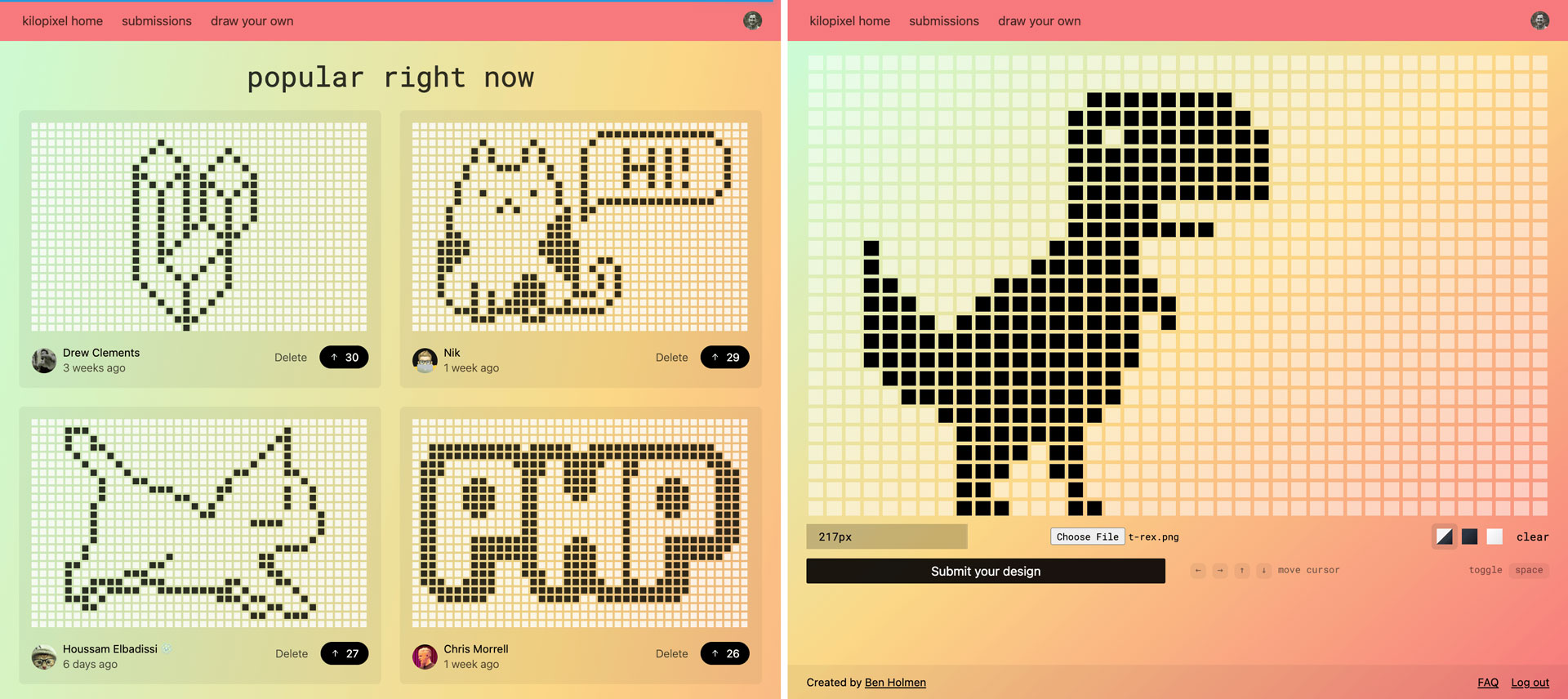Enthusiast spends 6 years building 'world's most impractical display' — 1,000-pixel wood panel uses a hacked-apart CNC machine to change a single pixel just 10 times a minute
Send an image to it now, via the web app. But be prepared for a wait.

Engineer Ben Holmen has spent six years crafting “the world's most impractical 1000-pixel display.” This large and purposely inefficient device, which displays images by rotating an array of stained wood blocks, is now open to public usage via a web app. Holmen has dubbed this interactive 40 x 25 pixel grid the Kilopixel.
In Holmen's blog post, we read that the project involved “a web app, a physical controller, a custom CNC build, generated gcode, tons of fabrication, 3d modeling, 3d printing, material sourcing.” Holmen is happy to recall that it's his most ambitious project yet.
From ping pong to wood blocks
The engineer’s first idea for building this concept was to use the motors, extruded aluminum frame, and pulleys that those who have assembled a 3D printer, hobby CNC machine, or laser cutter will be familiar with.
Holmen initially favored ping pong ball ‘pixels’ due to their weight/cost advantages. However, this idea fell by the wayside due to material niggles that became apparent only after some testing. The same fate befell Nerf balls. Eventually, Holmen turned towards his favored medium – wood. Moreover, conversations with fellow engineers resulted in him settling on implementing cubic – rather than spherical – wooden pixels.
Manufacturing precision is key to a project reliant on a uniform grid for its appeal. Thus, Holmen used a jig to finesse the “painstaking and time-consuming” process of making and assembling the kilopixel display – over several weeks of free time.
How it works
You might already have a good idea how this pivoting wooden block-based display works. We would usually say that for a quick visual guide to the inner workings of such a device, you should take a look at the video clip above. However, the video shared is a foreboding 9 hours and 50 minutes in length. By skipping through it, it is easy enough to see a slice of the ‘action’ through.
The concept and workings aren’t that hard to convey in writing. The pivoting wooden ‘pixels’ with alternating black/white faces are simply rotated to build an image using the basic CNC controller that Holmen cannibalized for this project.
Get Tom's Hardware's best news and in-depth reviews, straight to your inbox.
The controller accepts G-code over USB/serial, which turns the stepper motors to put the machine in the correct position. Then an instruction aimed at the third axis powers the wood pixel poking mechanism to refresh/orient the pixel to show the correct face. The engineer sums it up by explaining, “The Kilopixel is essentially a 2-axis machine that uses the third axis for the pixel poking mechanism.”

Kilopixel is now online for your personal blocky fun
Readers can go and try out the Kilopixel display for themselves at kilopx.com. If you visit, you will see the currently (slowly) rendering image. Below that is a queue of images that are next to be sent to the ‘screen.’ Why not draw and submit your own? As long as you are patient…
Holmen notes that the Kilopixel’s web app currently offers three modes. He envisions this device being used in “a coffee shop or something” in the future. There, it will be able to display user-submitted drawings, real-time collaborative images, and generate shapes and patterns in ‘idle mode.’ Not that this kind of display would need an idle mode screensaver, unless it is in a bright window and the wood dye gets sun-bleached due to UV exposure.
It’s a fascinating project that netizens at large can experience themselves, online. Before signing off in his blog post, Holman wryly observes that the only Kilopixel is “something physical, in my office, controlled by the internet. What could go wrong?”
Follow Tom's Hardware on Google News to get our up-to-date news, analysis, and reviews in your feeds. Make sure to click the Follow button.

Mark Tyson is a news editor at Tom's Hardware. He enjoys covering the full breadth of PC tech; from business and semiconductor design to products approaching the edge of reason.
-
chaz_music Interesting concept, but I would have come up with a solenoid based design. Just be mindful of the holding current. If you have ever worked on a a pinball game, the solenoid power supply is massive. You could end up with a 2KW low pixel count display!Reply -
ferdnyc At the risk of being That Guy, a "screensaver" wouldn't help to protect the Kilopixel's display if it were sitting in direct sunlight. Unlike pixel burn-in, which only occurs when the pixels are left in one mode for too long, UV bleaching will accumulate with every millisecond the pixel faces are exposed to the sun, starting right from the first millisecond. At best, showing random patterns might help to ensure that the bleaching happens more evenly.Reply

